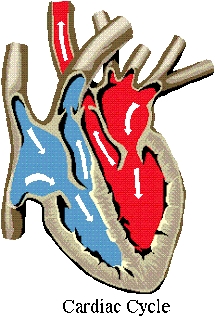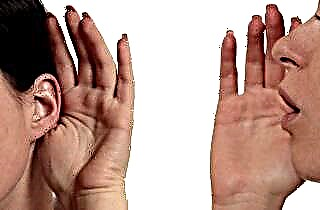Otitis externa is called an inflammatory lesion of the tissues of the structures, in the anatomical classification, isolated as the outer ear. These include the auricle, the external auditory canal, and the epidermal layer of the tympanic membrane. The provocateur of the development of inflammation is an infection - of a viral, microbial or mycotic nature. Contributing factors are trauma, chronic skin lesions such as eczema. In addition, the risk of otitis externa increases in conditions of significantly high humidity, when not too pure water gets into the ear, and also in the case of removing sulfur, which has a protective function. Information about what is the treatment for otitis externa can be useful to many patients.
Principles of therapy

Inflammatory diseases of the external ear are found in patients belonging to different age groups, and are not uncommon for either children or adults. In most cases, they do not pose a direct threat to life, however, they can be accompanied by dangerous complications and lead to the development of secondary pathologies. Improper treatment of the acute process contributes to the transition of the disease into a chronic form - it is extremely difficult to achieve elimination of symptoms in the second case.
Treatment of external ear inflammation is the task of an otolaryngologist. The correct choice of drugs and non-drug methods of therapy, determination of the dose and duration of admission are possible only with a face-to-face examination, diagnostics and differential diagnostics. Treatment approaches differ according to age - children and adults receive different medications at different dosages.
It is important to pay attention to the etiology of otitis media - inflammation of the outer ear can be triggered by various reasons, which must be taken into account. In addition, concomitant pathology, the presence of contraindications to taking any drugs, the brightness of the symptoms and the severity of the course in a particular patient are important. All these features of the manifestations of the disease can significantly affect the therapy regimen.
Otitis externa treatment is divided as:
- etiotropic;
- pathogenetic;
- symptomatic.
The basic principles of therapy for otitis externa can be summarized in the list:
- Exclusion of factors provoking inflammation.
- Elimination or reduction of the intensity of pain.
- Regular and thorough toilet of the outer ear.
- Use in the treatment of topical forms of drugs.

The use of local antibiotic therapy for the treatment of external ear inflammation has become widespread after comparing the effectiveness of local and local antibiotics. The result is achieved by directly applying the drug to the lesion and creating the maximum concentration of the active substance. This reduces the risk of side effects that are inevitable with prolonged systemic use.
To reduce the severity of inflammatory manifestations, non-steroidal anti-inflammatory drugs (NSAIDs), glucocorticosteroids (GCS) are used. With their help, you can achieve the elimination of edema - and at the same time reduce the intensity of pain. Since otitis externa does not always occur in isolation, it is necessary to remember about the likelihood of affecting the middle ear. It should be noted that corticosteroids are not considered ototoxic, unlike NSAIDs, which requires care in the choice of drugs in the presence of perforation of the tympanic membrane.
Preference is given to combined drugs that combine several directions of action.
Diffuse otitis media
With diffuse otitis externa, the skin of the external auditory canal is affected. The development of the disease is caused by a bacterial infection (staphylococci, streptococci, etc.). Diffuse otitis externa is characterized by pain, edema, redness of the affected skin, the presence of pathological secretions and requires differential diagnosis with similar pathologies.
With diffuse otitis externa, hearing acuity most often remains unchanged.
Treatment of otitis media of the external ear in the case of a diffuse form of the disease is carried out according to the following scheme:
- diet (excluding spicy foods, spices, alcohol);
- hyposensitization (calcium preparations, tavegil, loratadine);
- antibacterial drugs (anauran, chloramphenicol);
- antiseptics (brilliant green, methylene blue).

Antibiotics are applied topically (drops, ointments); systemic therapy is indicated for severe course, a decrease in the body's immune reactivity. Antiseptics are designed to lubricate the affected skin. Therapy can be supplemented with topical glucocorticosteroids (hydrocortisone).
Treatment of otitis externa in adults includes washing the external auditory canal with furacilin solution (0.05%), saline. The drugs injected should be warm and sterile. With their help, the toilet of the outer ear and preparation for the use of antibiotics are performed. Washing, as well as prescribing local forms of antibacterial drugs with an ototoxic effect (for example, neomycin), is unacceptable if the perforated stage of otitis media is likely to develop.
Erysipelas
Erysipelas is provoked by beta-hemolytic streptococcus, which can spread with the primary localization of the lesion on the scalp or face. A high risk of developing the disease arises in the presence of purulent otitis media and simultaneous injury to the skin of the outer ear - infection easily penetrates into the wounds.
The course of erysipelas of the external ear is often severe, therefore antibacterial drugs are prescribed systemically. It is necessary to pay attention to whether the patient took antibiotics before the start of therapy (a period of about 30 days is significant). If the answer is yes, you should find out which group the drug belonged to - this affects the subsequent choice.
Preparations for the etiotropic treatment of otitis externa with erysipelas of the external ear can be presented in the table:
| Group | Examples of drugs |
| Penicillins | Amoxicillin, Amoxiclav |
| Cephalosporins | Cefuroxime, Zinnat |
| Macrolides | Azithromycin, Spiramycin |
Physiotherapy (UV rays) is also used, following the rules of the outer ear toilet.
With bullous skin lesions, surgical treatment of otitis externa is required.
Fungal otitis media
Inflammation caused by fungi is called otomycosis. The affected area is not always limited to the structures of the outer ear, therefore, in many cases, treatment is required for external otitis media, but also for inflammation of the middle ear. The examination should exclude pathologies that cause immunodeficiency.
The basis of therapy is the effect on the etiological factor - it is important to know the type of pathogenic fungus, to determine the sensitivity to drugs by sowing the detachable ear on nutrient media. Otomycosis is characterized by a long course, a high likelihood of relapse after the therapy, especially if it was incorrectly selected or interrupted earlier than necessary. How to treat otitis externa of a fungal nature? Local forms of drugs such as:
- clotrimazole;
- nizoral;
- exoderil, etc.
Systemic therapy is indicated for a combination of external and middle fungal otitis media, the occurrence of the disease in the postoperative period.How to treat otitis externa in this case? Systemic forms of antimycotics are used - for example, Terbinafine, as well as additional drugs, the need for which depends on the nature of the pathological process and the general condition of the patient. Among them may be antihistamines, calcium supplements, vitamins.
The duration of the use of antimycotic drugs, both local and systemic exposure, is from 1 to 3 weeks. In this case, local therapy, as a rule, is longer. In addition, after recovery for a month, once a day, it is recommended to lubricate the skin of the ear canal with cotton wool soaked in an antifungal drug.
Carefully but thoroughly clean the ear canal before using topical fungicides.





